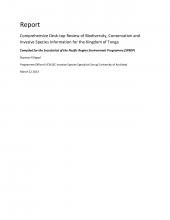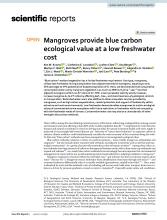Assessment of snail exposure to the anticoagulant rodenticide brodifacoum in the Galapagos Islands


Island and Ocean Ecosystems, BRB
Available Online
Alifano, A.
,
Campbell, K.J.
,
Fisher, P.
,
Jolley, W.
,
Parent, C.E.
2019
Eradication of invasive rodents has become a powerful tool to protect native island biota. Use of brodifacoum, an anticoagulant rodenticide, has contributed to hundreds of successful invasive rodent eradication e?orts on islands. Application of bait containing brodifacoum for this purpose requires appropriate consideration of adverse e?ects on non-target wildlife. Thus, a priori identi?cation of non-target risks and, where needed, approaches to mitigate these to acceptable levels, is now an essential component of eradication planning and implementation. As part of the plan for eradicating invasive rats and mice from Floreana Island in the Galapagos, we experimentally tested the e?ect of brodifacoum on the Galapagos endemic land snail species Naesiotus unifasciatus. Importantly, the trials were designed to evaluate e?ects of particular components of the bait pellets, namely the active brodifacoum, the pyranine biomarker, and a blue dye. We found no evidence for increased snail mortality following exposure to any of these bait components. We review results of past toxicity studies on terrestrial molluscs and ?nd that, as for our own study, there is likely to be little impact of anticoagulant rodenticide on terrestrial mollusc survival as the result of application of brodifacoum bait. However, given the limited taxonomic representation in the toxicity tests performed on terrestrial molluscs so far, we recommend the continued used of captive toxicity trials to assess potential e?ect of any rodenticide applications on native malacological fauna on a case-by-case basis where large-scale eradication programmes are planned and undertaken.








